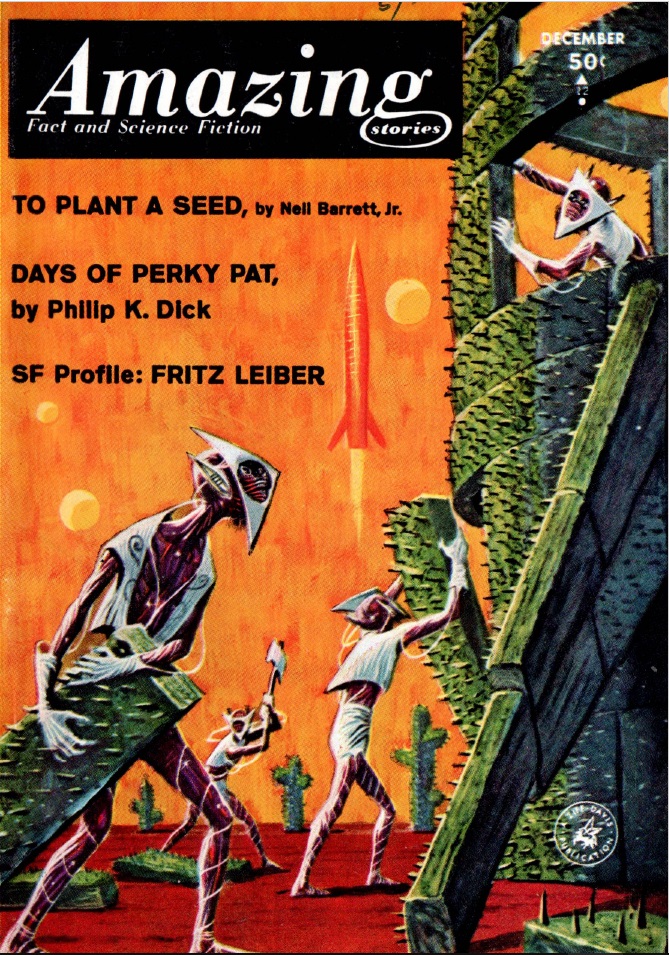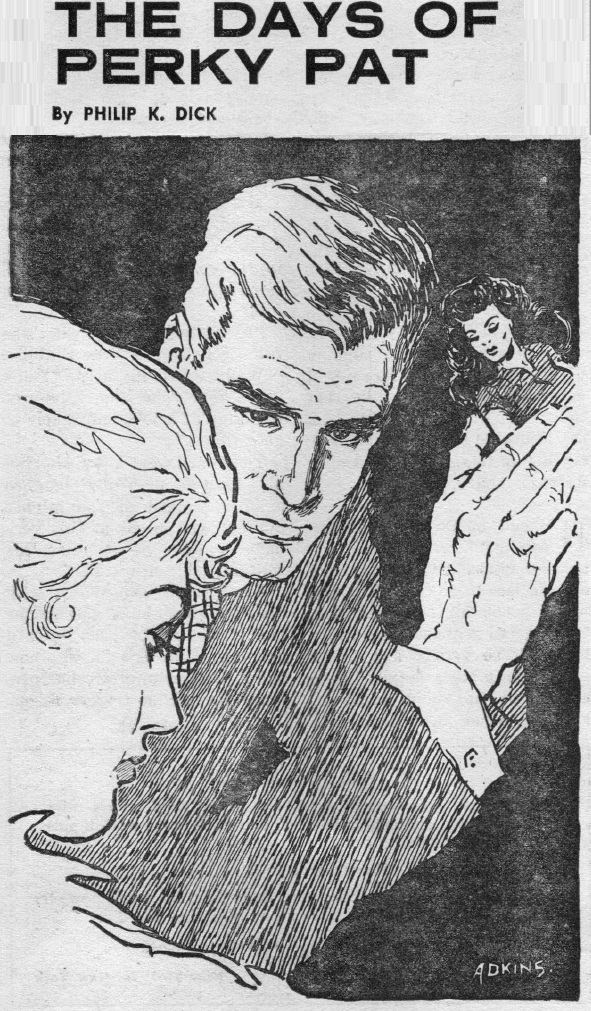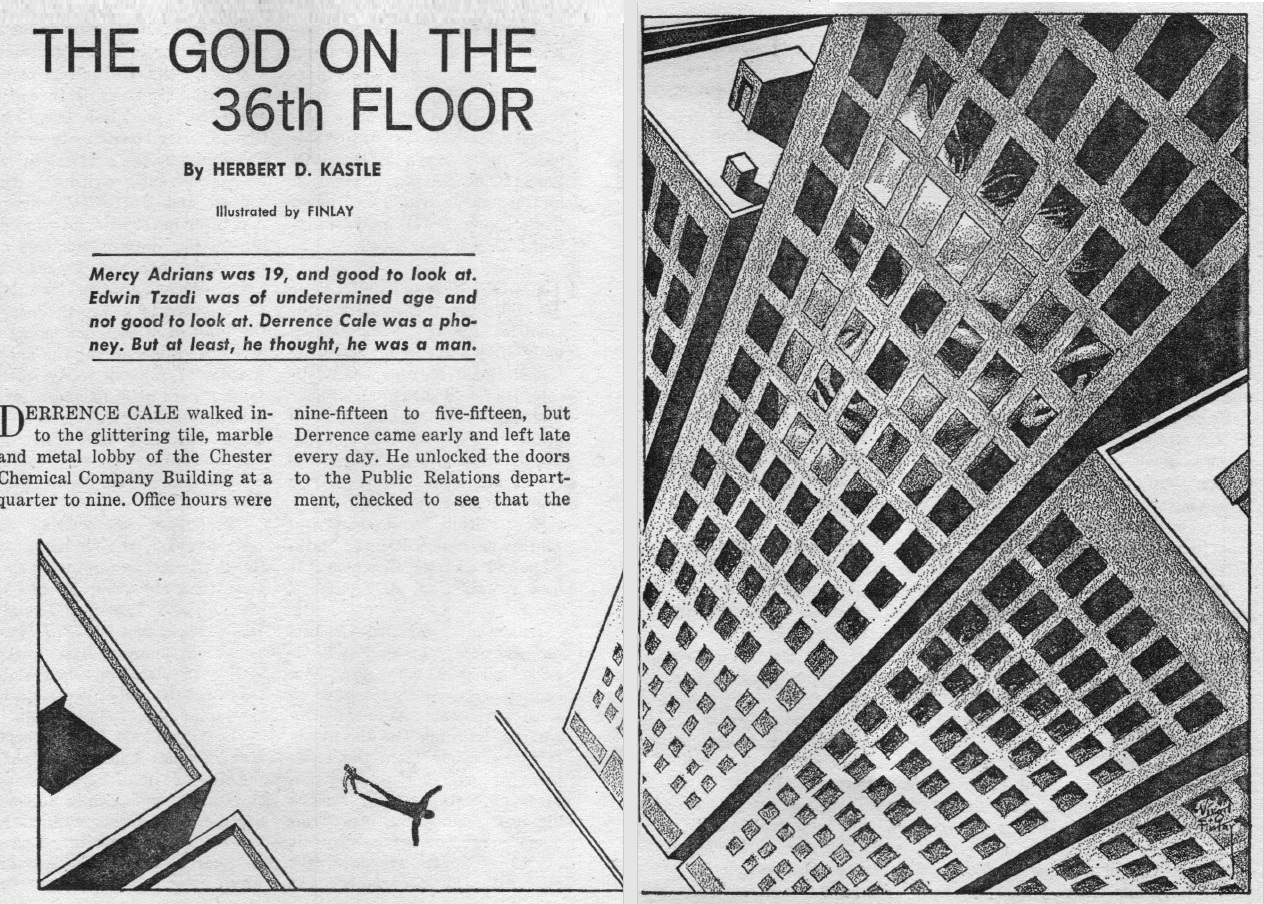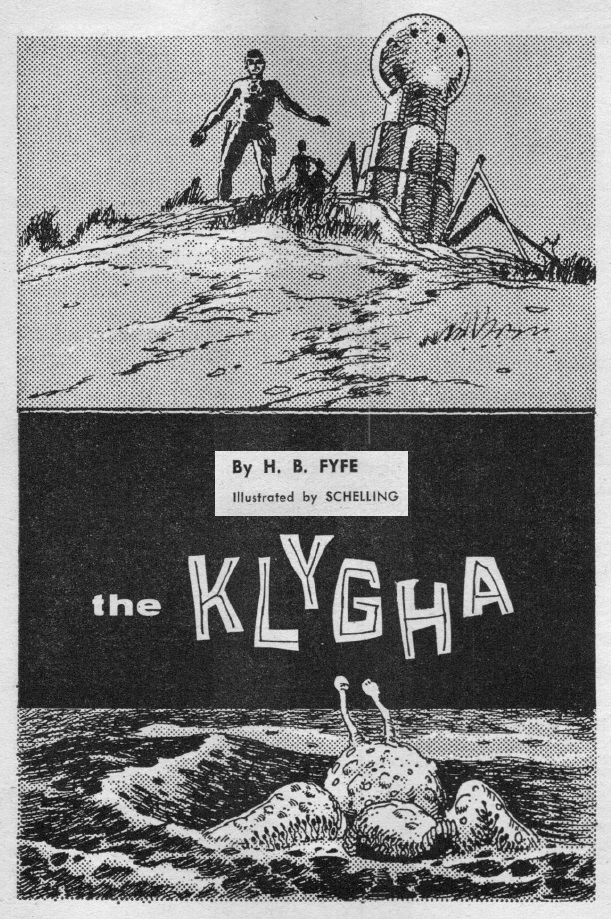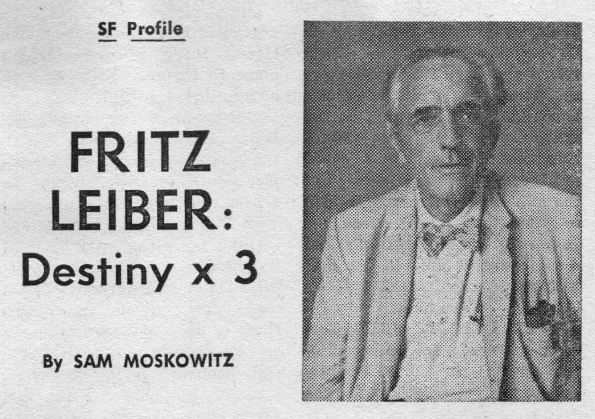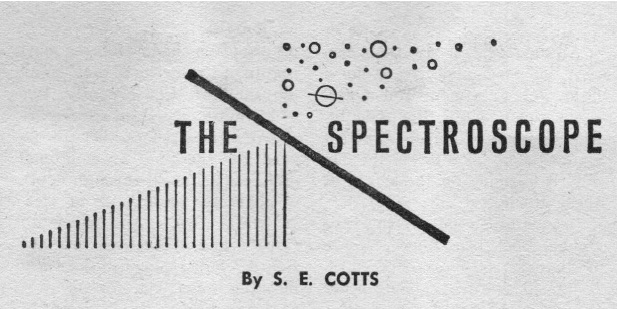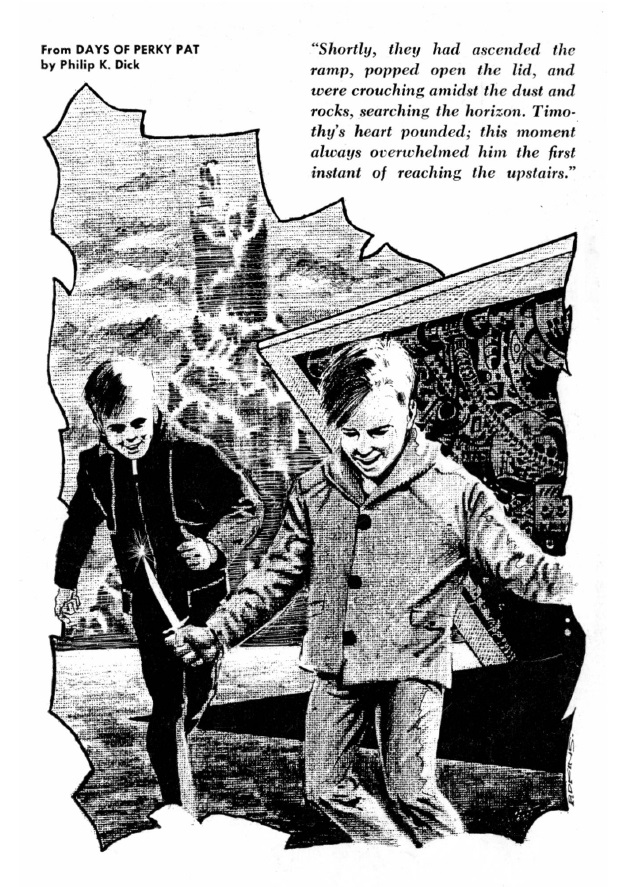
by Gideon Marcus
Here at the Journey, we read virtually every piece of science fiction and fantasy published. Our goal is not only to provide you with a complete encyclopedia of available works, but also to ensure we can make informed decisions come award-giving time.
Now, that's a lot of printed words. It used to be that I would publish a separate article for each book, but with such a big backlog of books waiting to be reviewed, I decided it'd be best to do the queue all at once, like they do in the review columns of the various magazines (for instance, Amazing's "Spectroscope").
As it turns out, the volumes you'll hear about today are all Ace Doubles (published with two complete books back-to-back and reversed), so if you're a fan of these odd blue-and-whites, this will help you manage your 1963 shopping list.

Alpha Centauri or Die!, by Leigh Brackett
Leigh Brackett is a legend. One of the relatively few women in the SFF arena, she is also a renowned scriptwriter, having penned the screenplay for The Big Sleep and Rio Bravo. Brackett has managed to keep plugging along in Hollywood in spite of the prevailing opinion of the last decade that women just don't get "male" genres like crime dramas and westerns.
Her SFF works have been recommended to me with increasing volume and frequency so I was delighted to have a chance to enjoy her latest novel, luridly titled (as all Ace Doubles are) Alpha Centauri or Die!. This book is really two stories in one: Part 1 involves a rebel movement on Mars led by the human, Kirby, and his love, the Martian humanoid named Shari. They dare to steal a manually controlled space ark, filled to the brim with colonists eager to emigrate, and evade the robotic sentinel spaceships that patrol the solar system. Their destination: an inhabitable planet in the triple Alpha Centauri system.
There's a lot of action and chases, both planetbound and in the black gulf between the stars, culminating in a an exciting scene in which a squad from the fleeing Lucy Davenport boards and deactivates a pursuing robot fighter ship.
Part 2 takes place on the newly colonized world, which shortly after settlement, is besieged by unseen, psionically equipped aliens that kidnap terrans via teleportation. Will this diabolical race end the colony, or is it all a misunderstanding?
That the two sections are so different in subject matter and tone is no coincidence. Alpha Centauri or Die! is a fix-up of two stories from the early 1950s, both published in Planet Stories. I'd only previously read The Ark of Space (on which Part 1 is based) so I can't tell you if the two tales were ever meant to be linked. In any event, the resultant novel is not a great introduction to Brackett's works. Particularly frustrating is the short shrift the women characters get, even at the hands of a woman author. With the exception of Shari, they are a herd of complaining housewives. The Martian heroine fares a bit better, joining the raiding party against the robot starship and using her esper powers to help deduce the nature of the beasts of Alpha Centauri, but her exploits point out just how alone she stands in representation of an entire gender.
Aside from that, Alpha Centauri or Die! is a competent but not groundbreaking action piece, slightly less than the sum of its parts, not progressing far from the pulp era in which Brackett made her first appearances.
Three stars.
Legend of Lost Earth, by G. McDonald Wallis
It's common practice in SFF for women to initialize their first names (or flat-out take on male pseudonyms). I have been told vociferously by one of my readers that this practice has nothing to do with any bias against women in the genre; nevertheless, it is puzzling that men don't seem to do it. In any event, the "G." stands for Geraldine, and this is her second Ace Double, the first being The Light of Lilith, which I have not read.
Lost Earth takes place on the dusty, red world of Niflhel, its atmosphere foul with the soot of a million mines. Even the memory of Earth, destroyed by a human-caused catastrophe, is taboo. But Giles Chulainn is seduced by the teachings of a secret society that keeps the half-remembered dream of their home planet alive. A cat and mouse game ensues, with Giles taking on the role, by turns, of a subversive, a double, and then a triple agent.
The true nature of the barren colony world and its connection with the lost verdant fields of Earth is ultimately revealed, though by the time you get there, you might not care, having been increasingly bombarded with a bamboozle of pseudo-scientific mysticism, Celtic legend, and plot incoherence. Nevertheless, Lost Earth does have a strong first half and a nice flavor throughout. Three stars.

Captives of the Flame, by Samuel R. Delany
Delany is another author I'm catching on his second Ace book, the first being The Jewels of Aptor, which came out last year. He is noteworthy for being the first black SF novelist (I believe; correct me if I'm wrong).
Captives of the Flame takes place on a blasted Earth, the remnants of humanity confined to just one city and its adjacent shoreline and islands. Around it lies a radioactive barrier that has constricted over the years: just two generations before, it engulfed the city's neighboring polis, forcing its inhabitants to flee. It is implied early on that the barrier is not of human origin.
The novel details the efforts of a mismatched band of heroes, including an exiled member of the royal family rendered invisible by the radiations, a young woman acrobat/thief, and an ambitious Duchess, to determine the true nature of the alien incursion and to use the extraterrestrials' powers to right the bellicose, corrupt human government.
On the plus side, the novel features an interesting world and a refreshingly varied set of characters, male, female, and alien. On the red ink side of the ledger, the plot is sketchy, and viewpoints shift with little warning or context. I have to wonder if this is the author's fault or simply a result of Ace's hatchety editing style.
Three stars.
The Psionic Menace, by Keith Woodcott
Those in the know are aware that "Keith Woodcott" is a pseudonym for English writer, John Brunner. And those who have followed this column since the arrival of author Mark Yon will soon find that The Psionic Menace is an Ace-style retitling of Crack of Doom, which appeared under the Woodcott name in two issues of New Worlds last year. It's about a universe-spanning psychic distress call, and the efforts humanity takes to decipher it.
It is word for word the same book, which means you will enjoy it as much (or little) as the serialized version. Mark gave it three stars.

The Rebellers, by Jane Roberts
What a beginning on this one! Gary Fitch is an artist on a crushingly overpopulated Earth. His job is to take old classics and make copies as vehicles for conveying government propaganda. He and his colleagues live under lock and key in a barracks, barely receiving enough sustenance for survival. Yet their situation is the enviable one for outside their prison walls lies the teeming masses of humanity, hungrier and denied access to the books and artworks the painters have.
One day, rioting plebeians storm the prison walls, providing Fitch an opportunity to escape — from the frying pan into the fire. The artist hooks up with an insurgent organization, "The Rebellers" (why not simply "The Rebels?") but their motives aren't as simon-pure as advertised. Worse yet, a virulent plague is spreading, threatening to wipe out the human race once and for all. Can Fitch take over the remnants of local government to avoid complete catastrophe?
Roberts' book starts out strong but resolves abruptly and rather implausibly. For instance, it is discovered that the plague largely affects pregnant women and mandatory birth control becomes the linchpin on which combating the virus turns. If birth control is so ubiquitous and effective, why wasn't it in common use before our planet was choked with people?
This is the first novel by Roberts, whose short fiction I've greatly enjoyed. While this book is a mixed success, she may get the hang of the form in time for her next effort. In any event, it's nice to see her back after a four-year hiatus.
Three stars.
Listen! The Stars!, by John Brunner
Last up is the novelization of John Brunner's Listen! The Stars!, a novella that appeared in Analog last year. The tale of the "Stardroppers," who use extra-dimensional telescopes to plumb the unknown depths of the universe was one of my favorites from Brunner. In fact, I gave it a Galactic Star.
Unlike The Psionic Menace, this Ace version is significantly revised. The story's no different, and all the same scenes are there, but Brunner (or the editor) has padded every paragraph with enough extra words to fill 96 pages. Or maybe Analog's editor, John W. Campbell, had cut the original to fit the pages of his magazine.
In any event, both versions are good, worthy of five stars. If you want a shorter read, find the magazine, and if you want something lengthier, well, you get this and the Roberts novel, too.

So there you have it, a typical grab bag of Ace production. A good half of it was scoured from the pages of the magazines, and only the Brunner (under his own name) really hits it out of the park. Still, at 20 cents a novel (40 cents for a double), all of it at least readable, you could do a lot worse.





![[November 23, 1963] President Kennedy returns to D.C. one last time](https://galacticjourney.org/wp-content/uploads/2018/11/631123grief-1-672x372.jpg)

![[November 22, 1963 cont.] Highest indictment for Presidential assassin](https://galacticjourney.org/wp-content/uploads/2018/11/631122oswald-672x372.png)
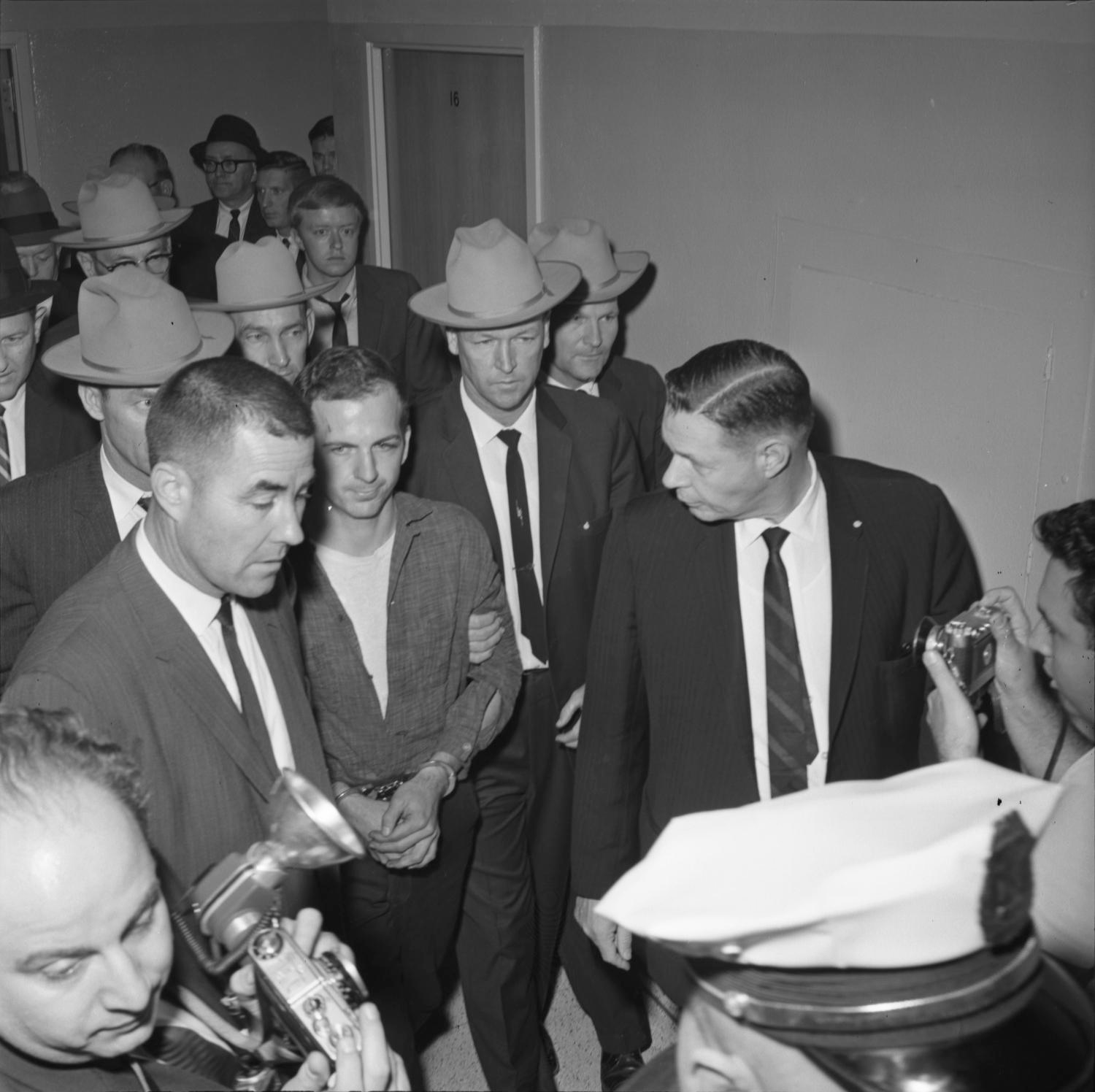


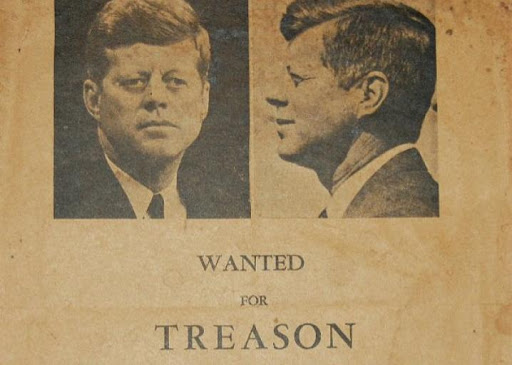
![[November 22, 1963 cont.] Ripples down under](https://galacticjourney.org/wp-content/uploads/2018/11/631122dead-672x372.jpg)


![[November 22, 1963 cont.] Murder charge for Lee Harvey Oswald](https://galacticjourney.org/wp-content/uploads/2018/11/631123grief3-672x372.jpg)
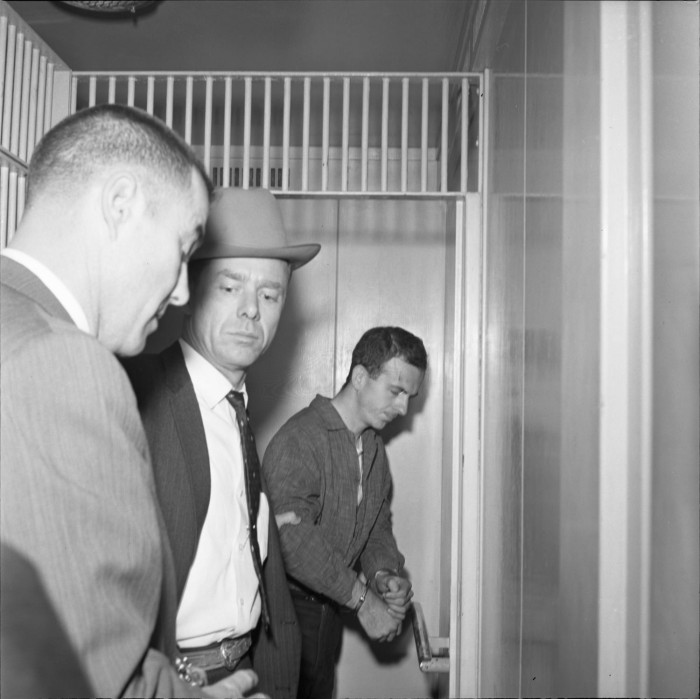


![[November 22, 1963] President Kennedy has been assassinated](https://galacticjourney.org/wp-content/uploads/2018/11/631122a1030-672x372.jpg)




![[November 21, 1963] Words for bondage (Laurence M. Janifer's <i>Slave Planet</i>)](https://galacticjourney.org/wp-content/uploads/2018/11/631121janiferslaveplanet-387x372.png)




![[November 19, 1963] Fuel for the Fire (December 1963 <i>Fantasy and Science Fiction</i>)](https://galacticjourney.org/wp-content/uploads/2018/11/631119cover-667x372.jpg)



![[November 17, 1963] Galactoscope (Three Ace Doubles!)](https://galacticjourney.org/wp-content/uploads/2018/11/631117f187-672x372.jpg)




![[November 15, 1963] A Sign of Things to Come? (<i>The Outer Limits</i>, Episodes 5-8)](https://galacticjourney.org/wp-content/uploads/2018/11/631115c-672x372.png)


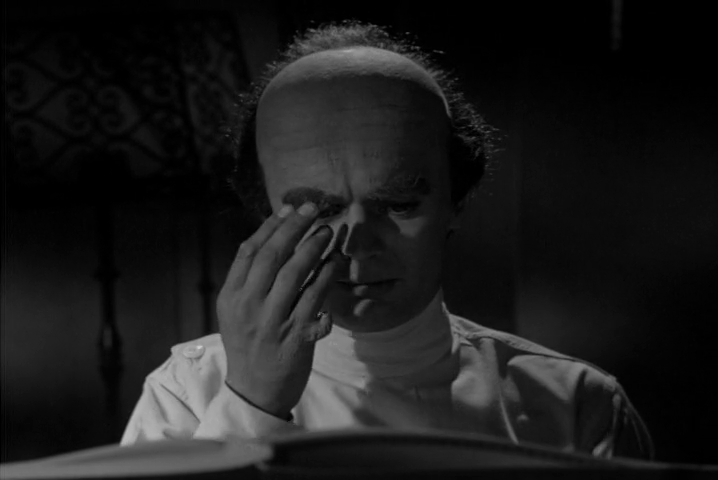
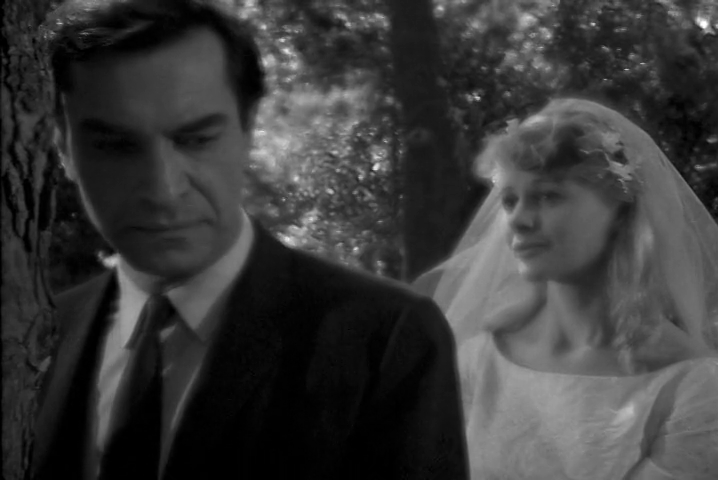
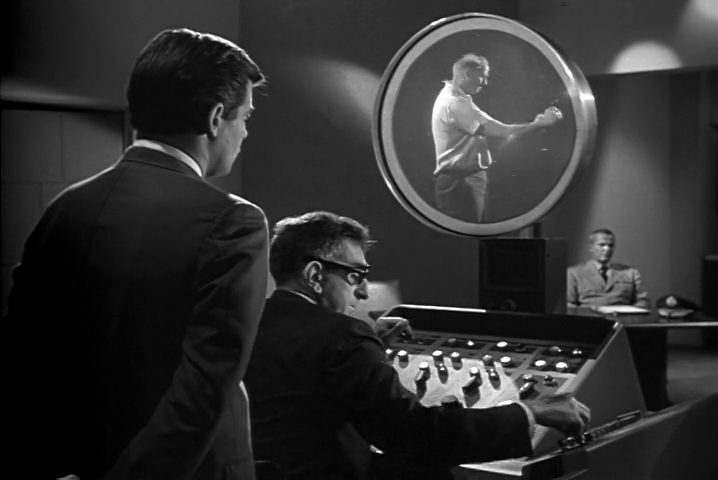
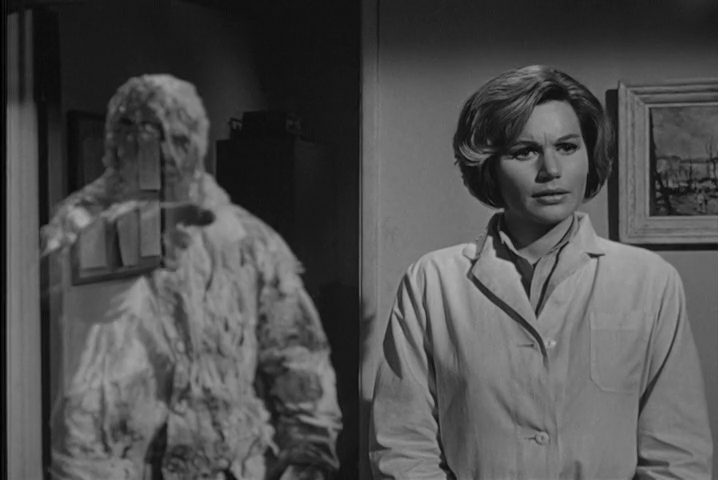


![[November 13, 1963] Good Cop (the December 1963 <i>Amazing</i>)](https://galacticjourney.org/wp-content/uploads/2018/11/631113cover-669x372.jpg)

